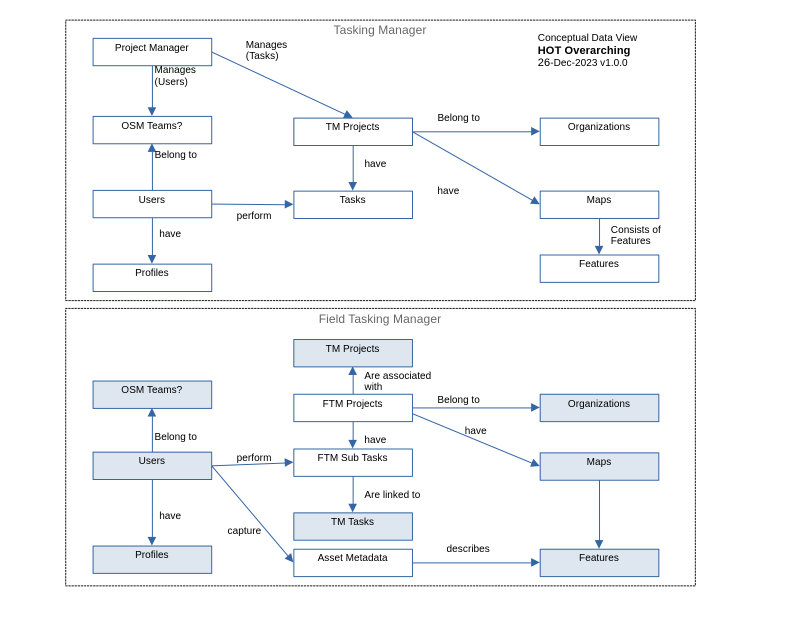Overviews¶
While today HOT architecture consists of a wide range of applications and modules, the vision for the future is a more unified ecosystem.
The key features of this architecture are:
- An integrated set of back-end modules
- A common data model based on standards and only extending as required
- Fit for purpose front-ends, built on REACT
HOT Overview¶
This is an overarching view of the HOT ecosystem of solutions. It includes some key non-HOT components for context and because they serve an important role in the ecosystem.
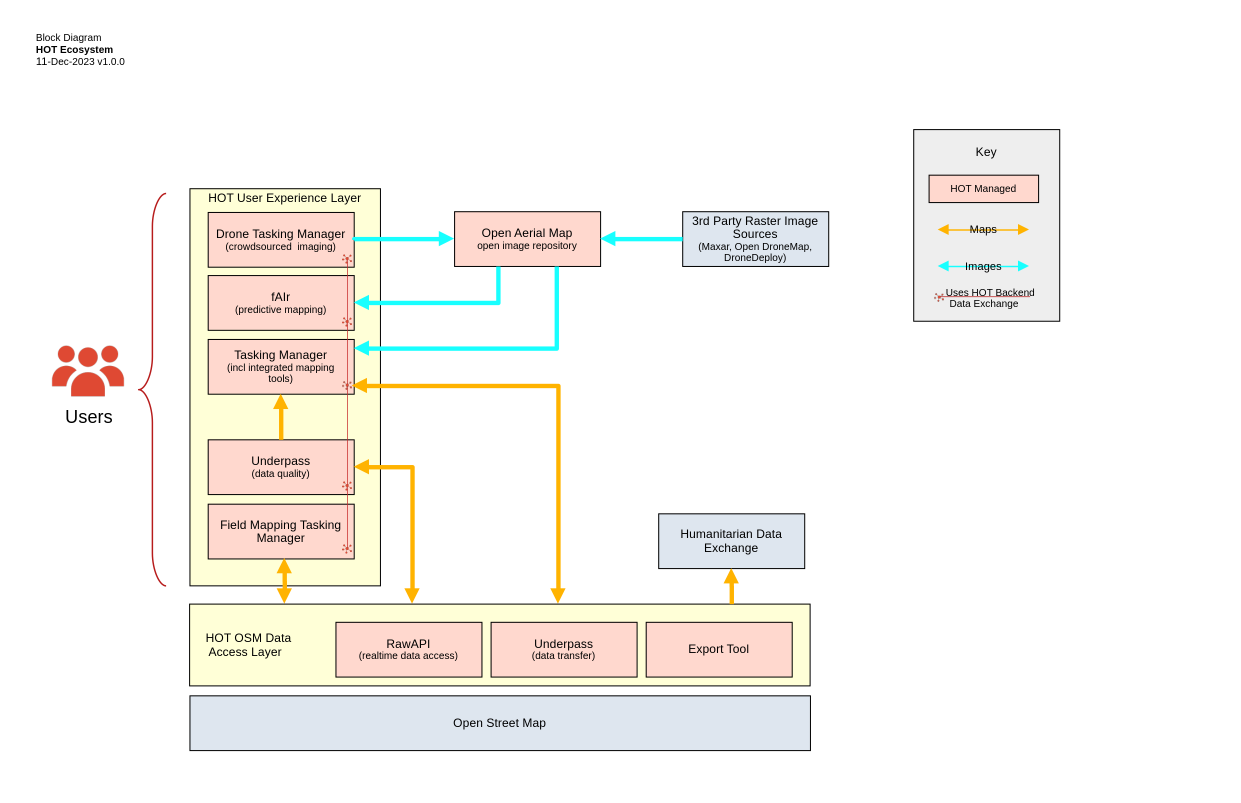
Solution User View¶
This solution user view provides a user-centric view of the HOT architecture showing the key user roles and what activities they will perform using the solution. You can learn more about the diagram and notation here.
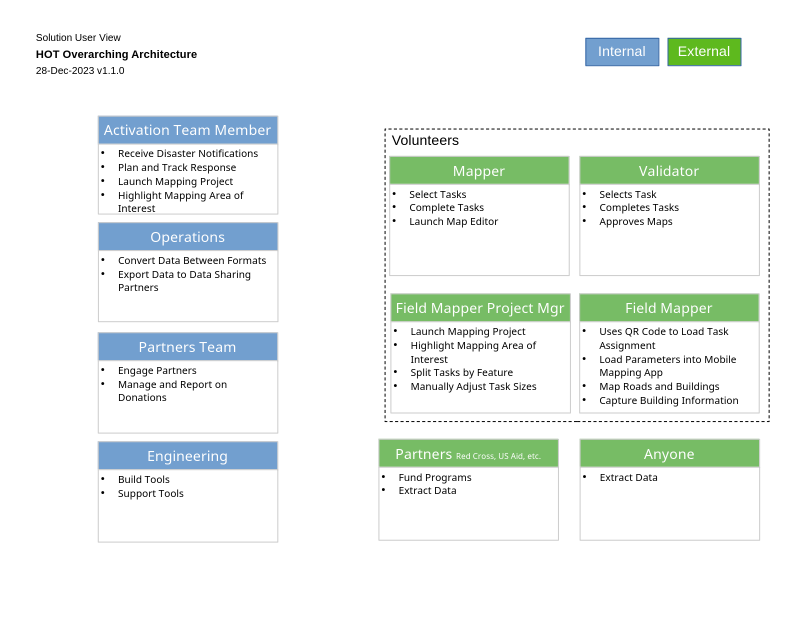
Information Flow¶
This information flow is a dynamic view that shows the flow of information (in high level business terms) between the HOT ecosystem components. You can learn more about the diagram and notation here.
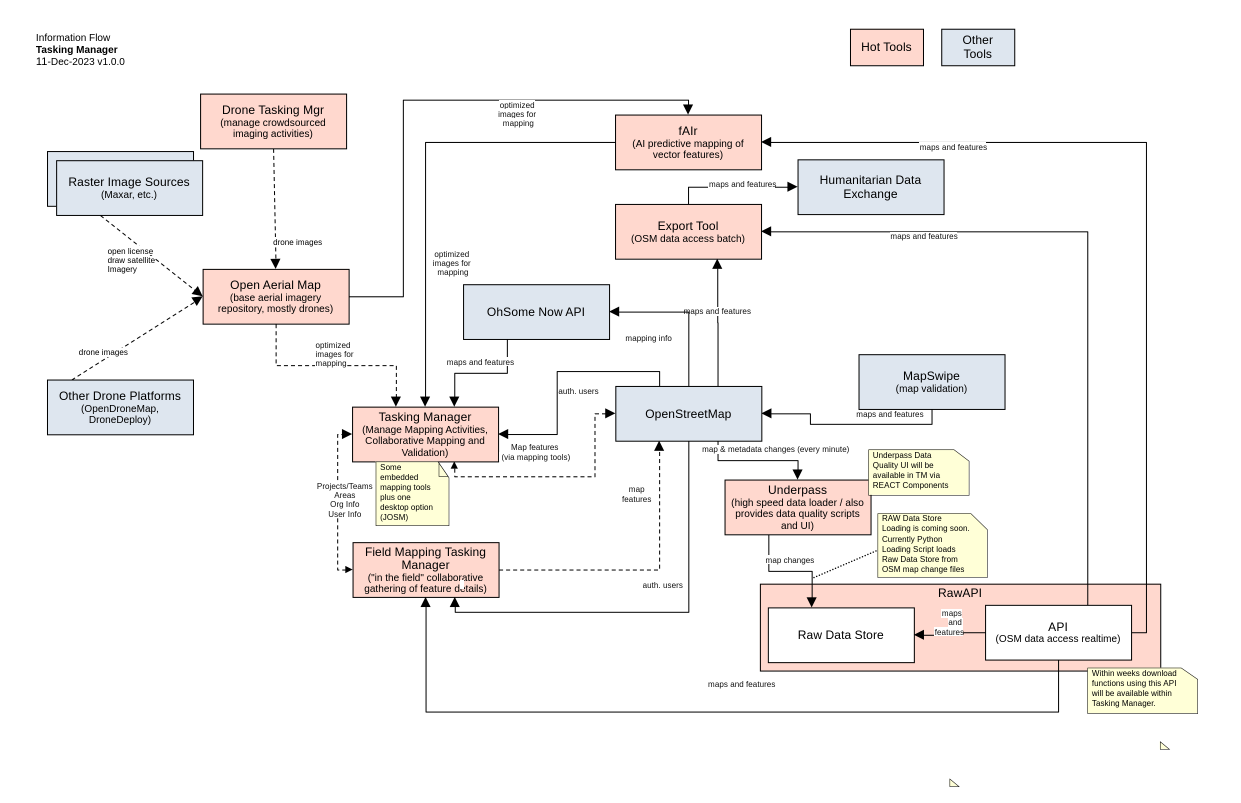
Component Model¶
This component model is a static view that shows how the HOT ecosystem components connect to one another. You can learn more about the diagram and notation here.
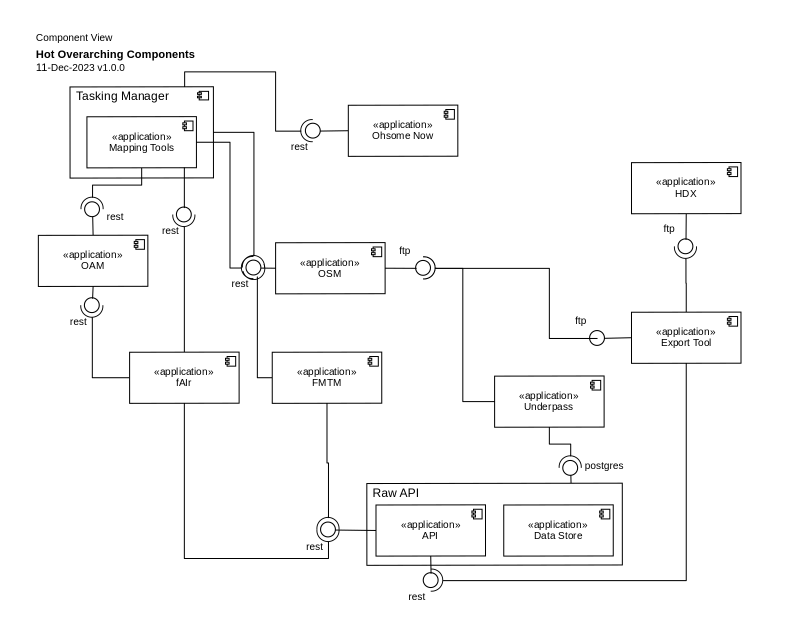
End-To-End (E2E)¶
This is a plan, currently in progress, to have a better end user experience between multiple HOT projects. Since often multiple projects are used, Tasking Manager, Export Tool, Field Mapping Tasking Manager, etc... the journey between them should be efficient.
E2E Data Integration Diagrams¶
This is the high level concept for the E2E data integration
approach. The TD Admin components in the center are not actually a hub
instance, but a set of shared modules used for connectivity.
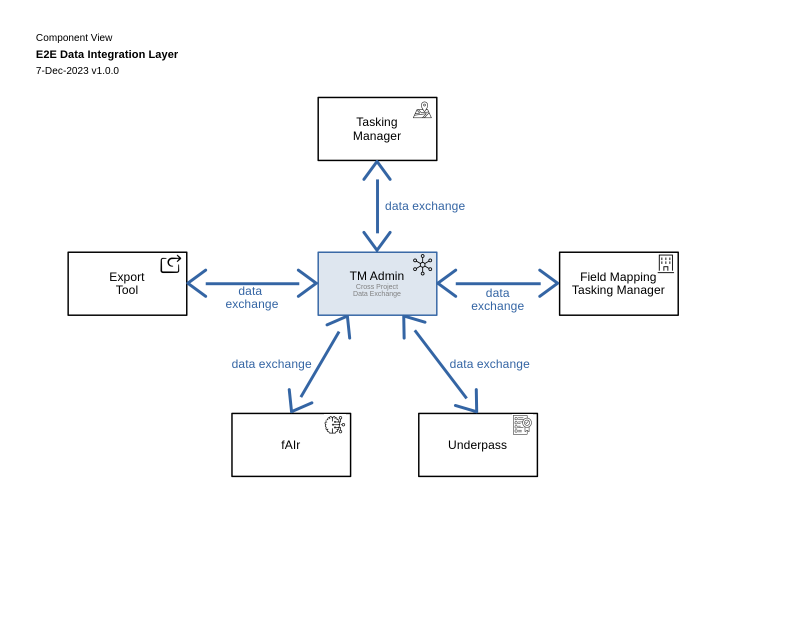
E2E Integration Sequence Diagrams¶
These show the interactions between multiple components at a more detailed level.
|  |
|  |
|
|
|  | . |
| . |
E2E Conceptual Data Model¶
This is a conceptual data model, illustrating the key entities and
relationship in the data model.
